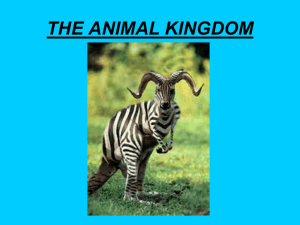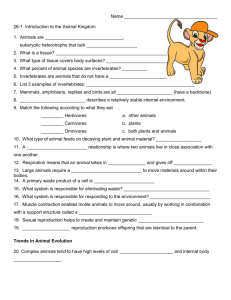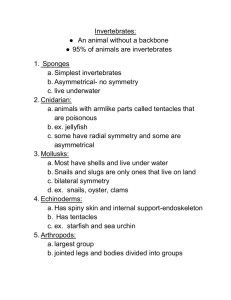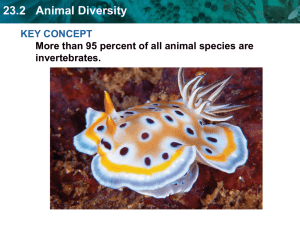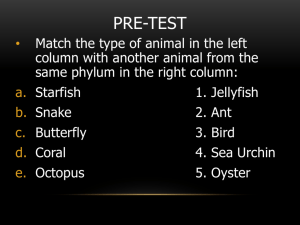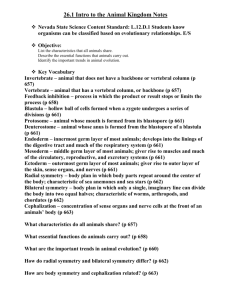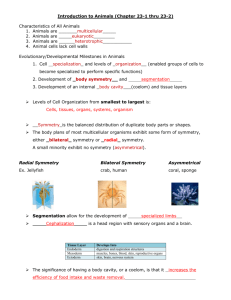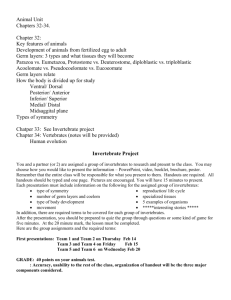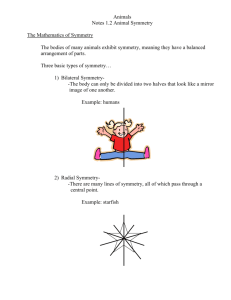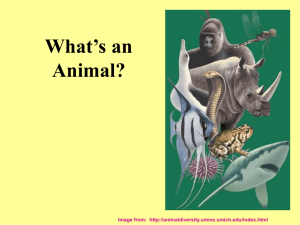Invertebrates
advertisement
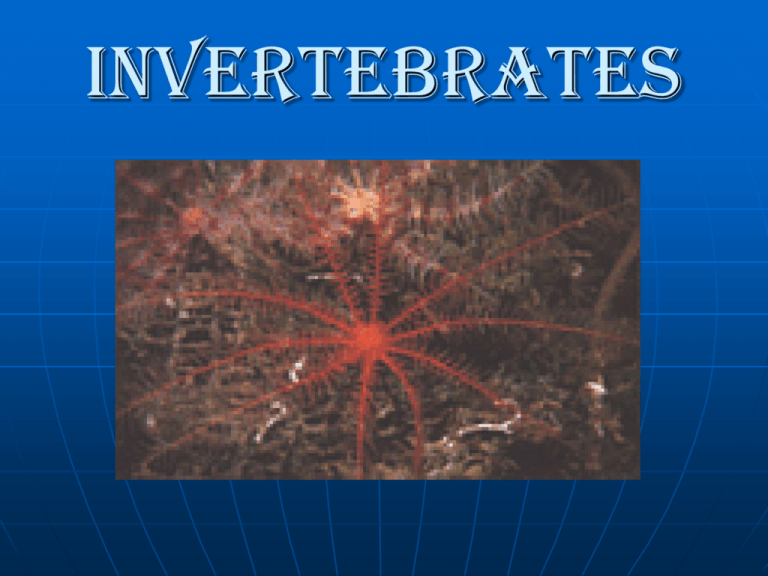
Invertebrates INVERTEBRATES are… Animals that do not have a backbone at anytime during their development There are 9 major phyla of invertebrates Porifera Sponges – “Pore Bearer” Two cell layers * One body opening * Asymmetrical * Sessile * Filter Feeders * Cnidaria * * * * Two cell layers One body opening Radial symmetry Stinging cells (nematocysts) * Two life stages: polyp (baby) medusa (adult) Platyhelminthes (flatworms) * Bilateral symmetry * Flattened bodies * One body opening * Slightly developed nervous & sensory systems Tapeworms in Body Nematoda (roundworms) * Tubelike digestive system with 2 body openings * Many parasitic * Sensory eyespots Heartworm—A parasitic nematode Mollusca * Bilateral symmetry * Body cavity for organs * Complete digestive tract with 2 openings * Muscular foot * Mantle (surrounds internal organs; secretes shell in most mollusks) EXAMPLES OF MOLLUSKS * Gastropods (1 Shell) Snails * Bivalves (2 Shells) Clams * Cephalopods (head-footed) Octopi, Squid Annelida (segmented worms) * Bilateral Symmetry * Coelom and two body openings * Segmentation— provides for great flexibility * Leeches, earthworms, bristleworms Arthropoda * * * * Bilateral Symmetry Exoskeletons Jointed appendages Some have fused segments Examples: * Insects, spiders, crabs, centipedes Echinodermata * Radial Symmetry * Endoskeleton * “spiny skin” • Water vascular system for movement—makes suction on “feet” * Sea Stars (starfish) Sand Dollars, Sea Urchins, Sea Cucumbers Sand Dollar Sea Urchin Sea Cucumber Invertebrate Chordates (most advanced of invertebrates) * Have a notochord, dorsal nerve cord, gill slits, muscle blocks * Bilateral Symmetry Examples: Tunicates (Sea squirts),
